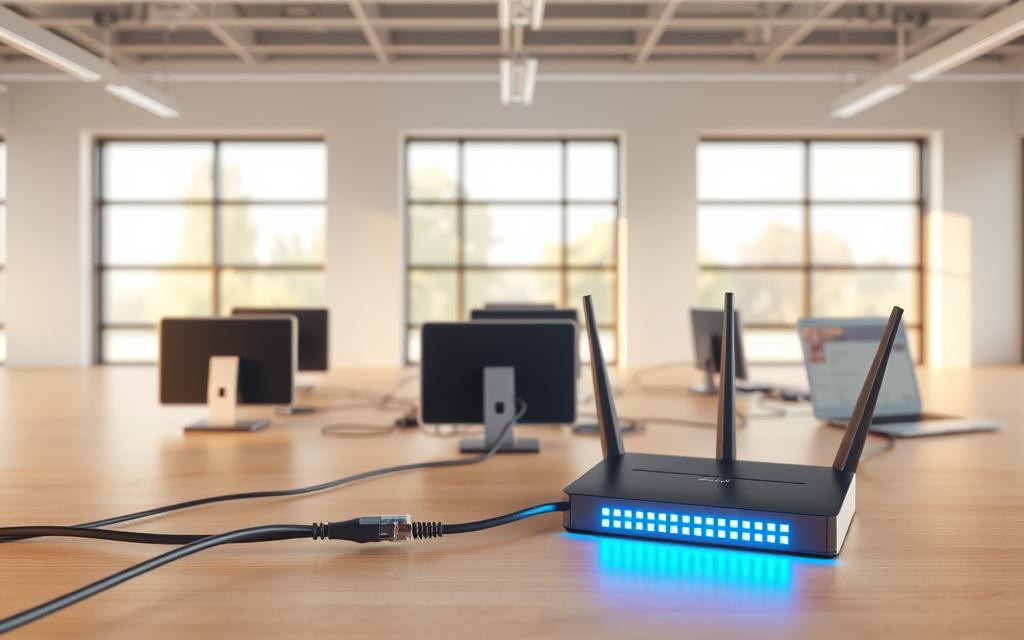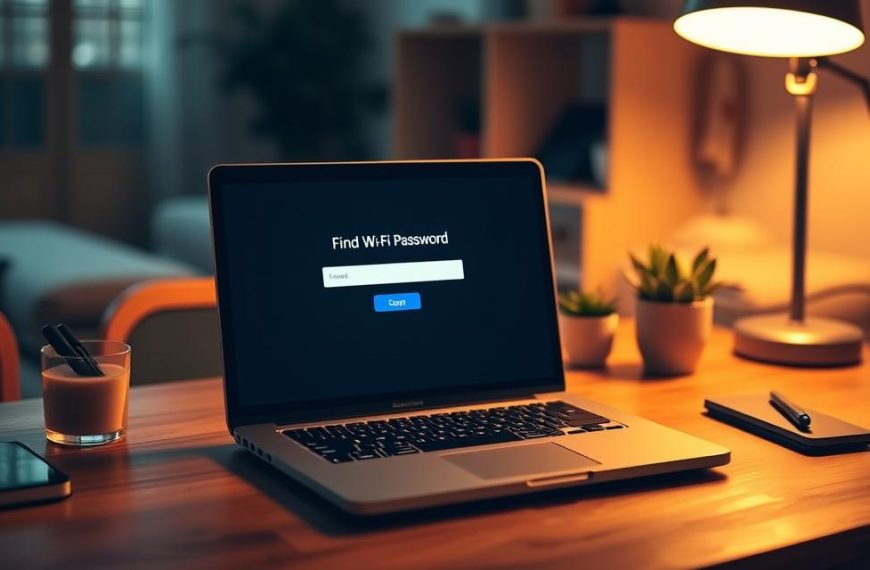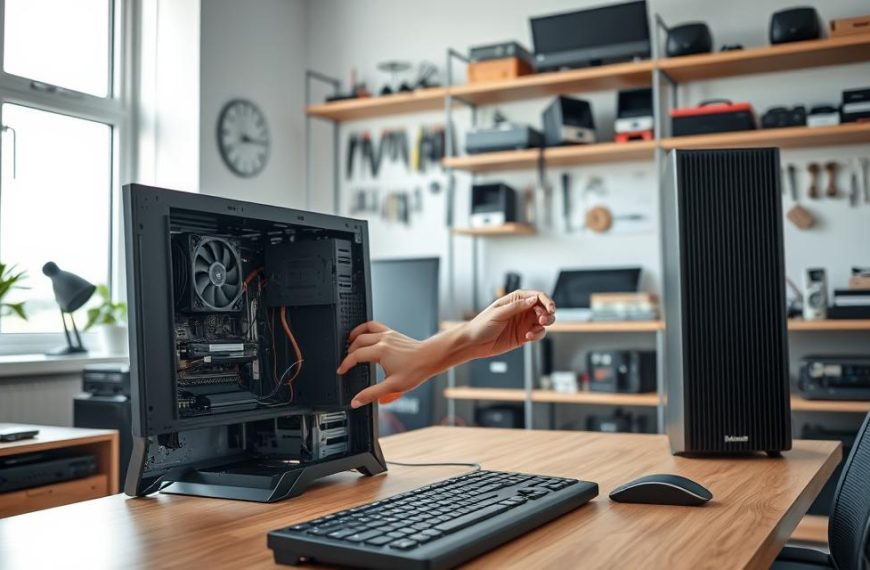In today’s world, sharing data between devices is key for both homes and offices. Whether it’s for work or sharing family photos, knowing network file sharing is essential. It makes digital communication smooth and easy.
This method lets you send documents, photos, and other files between computers. You don’t need external storage or the internet. It’s fast and secure, all within your local network.
Today’s operating systems have many ways to share files. From basic folder sharing to advanced methods, these tools help move content easily. They work well on the same network.
Our guide will cover both simple and complex network file sharing methods. You’ll find practical tips for different platforms. Plus, learn how to improve your file transfers in networked settings.
Understanding Network File Sharing
Network file sharing lets computers share data on a local network without the internet. It’s key in offices and homes. Knowing how it works can save you time and reduce frustration when moving files.
At its heart, network file sharing uses protocols for device interaction. The Server Message Block (SMB) protocol is standard for Windows networks, making file and printer sharing easy. Other systems like macOS and Linux also use SMB, making it a common solution for different environments.
Network discovery is vital for seeing devices on the network. It lets computers find other machines. Without it, finding devices can be hard, even when they’re connected right.
For network file sharing to work, several things must be in place:
- All computers must be on the same network segment
- Devices should use the same workgroup name
- Network profiles should be private, not public
- Firewalls must allow file sharing connections
Security is a big part of network file sharing. File permissions control who can access files and what they can do. Authentication keeps only authorised users from accessing shared resources, keeping your data safe.
Many users face issues with network credentials when trying to access shared folders. You might need to enter a username and password, even if you’ve set up sharing right. This often happens because of user account or permission mismatches between computers.
| Network Component | Purpose | Common Issues |
|---|---|---|
| SMB Protocol | File and printer sharing | Version compatibility problems |
| Network Discovery | Device visibility | Disabled by default on public networks |
| Workgroup Settings | Network organisation | Mismatched names between computers |
| File Permissions | Access control | Incorrect user rights assignments |
For those wanting to transfer files between computers on the same network, understanding these basics is key. It helps solve common problems and makes file transfers smoother. Keeping network settings the same on all devices also boosts sharing reliability.
Today’s networks use both wired and wireless connections, adding complexity. But, the core principles of network file sharing stay the same. Proper setup ensures devices talk to each other well and stay secure.
How to Send a File to Another Computer on the Same Network
There are many ways to share files between computers on a network. Each method has its own benefits, depending on your system, security needs, and how fast you want to transfer files.
Using Built-in Operating System Features
Today’s operating systems have tools for network file sharing. These tools work well without needing extra software.
Windows File Sharing Steps
Windows file sharing uses the SMB protocol for safe transfers. Here’s how to start:
- Turn on network discovery in Control Panel > Network and Internet
- Right-click the folder you want to share and choose “Give access to” > Specific people
- Pick the people you want to share with from the network list
- Decide if they can read or write to the folder
- Find shared files in Network in File Explorer
macOS AirDrop and Sharing Steps
macOS AirDrop lets you send files wirelessly. It’s great for sharing between Macs.
To use AirDrop:
- Make sure both devices have Wi-Fi and Bluetooth on
- Open Finder and click AirDrop from the sidebar
- Change who can see your device to “Everyone” or “Contacts Only”
- Drag files to the other person’s device icon
For regular sharing, go to System Preferences > Sharing to set up folder permissions.
Using Cloud-Based Services
Cloud services connect your local network to the internet. They offer flexible cloud file transfer options. Services like OneDrive and Google Drive keep your files in sync across devices.
Cloud services have many benefits:
- Files sync automatically on all devices
- You can access files from anywhere with internet
- They keep a history of your files for recovery
- They’re great for working with teams
Just upload your files to cloud storage. They’ll be ready for anyone else using the same account.
Using Direct Transfer Tools
Direct transfer tools offer more than what’s built-in. Tools like AnyViewer are fast and secure.
These tools have:
- They’re faster than usual methods
- They work on different platforms (Windows, macOS, mobile)
- They use ECC encryption for safe transfers
- They allow remote access for tech support
To use them, download the app on both computers. Then, connect using IDs and start transferring files by dragging and dropping.
Tips for Efficient and Secure File Transfers
Improving your file transfer process is key. You need to focus on both speed and security. Choosing the right tools and preparing well can make transfers faster and safer.
Start by sorting your files before sharing. Put similar documents in folders and zip big files. This makes transfers quicker and uses less network bandwidth.
For the fastest transfers, use a wired Ethernet connection over Wi-Fi. Wired connections are more stable and quicker, which is great for big files.
Setting up the right permissions is also important. Only let people with write access make changes. Give read access to those who need it. This stops files from being changed or deleted by mistake.
Here are some security tips for safe transfers:
- Turn on encryption in your transfer tools
- Lock sensitive files with passwords
- Make sure you know who you’re sharing with
- Keep your security software up to date
For networks that are not reliable, use external storage. USB drives or hard disks are good for transferring files when the internet is down.
Tools like AnyViewer have strong security features. They include encryption and access controls. These help keep your secure file sharing up to date.
Always check that files were transferred correctly. Make sure they open properly on the other computer. This confirms your efficient file transfers were successful.
Keep logs of your transfers if you can. Recording what was sent, when, and to whom helps with future checks. It also improves your secure file sharing methods.
Troubleshooting Common Problems
When computers on your network won’t work together, sharing files can get really tough. Many people face similar problems that mess up their work. Knowing these common issues helps you fix them fast.
One big problem is when computers don’t show up in the Network section. This usually happens because network discovery is turned off. Make sure your network profile is set to private, not public. Also, make sure network discovery is on for all devices.
Another big issue is when you get authentication errors. Even with the right password, you might get prompts. This often means there’s a permission problem or an issue with saved credentials. Try using COMPUTERNAME\Username to log in correctly.
Problems with SMB protocol can also cause big issues. Older systems might need SMB 1.0/CIFS, but newer ones might not support it. To fix this, enable SMB 1.0/CIFS in Windows Features. But remember to turn off any unused protocols for security.
Shared folders can sometimes go missing without a clear reason. This might be because of service issues or changes in permissions. Try restarting the Server service on the computer sharing the folder. Also, check that folder permissions haven’t been changed by mistake.
For tricky problems, Microsoft has detailed troubleshooting help. Their guides cover everything from basic to complex network setups.
Simple restarts can often solve small problems. Reboot both computers and any network gear to clear errors. Also, check your firewall settings to make sure they’re not blocking file sharing. Make sure all devices are in the same workgroup or domain.
Being patient and methodical is key. Tackle one problem at a time, not all at once. Keep track of what you do so you can remember how you fixed it later.
Conclusion
Choosing the best way to send files on the same network depends on what you need. Tools like AnyViewer let you access files remotely. Windows Nearby Sharing is great for quick transfers between devices. Network Share lets you access folders directly, and cloud services like Google Drive or Dropbox are good for sharing across platforms.
External storage devices are a solid choice for offline needs.
Each method has its own benefits. Network Share is fast for big files in a local network. Cloud services are easy to use from anywhere with internet. Tools like AnyViewer offer a balance of ease and security for everyday use.
Think about the size of your files, your security needs, and if you have internet access. This will help you decide the best option.
The best way to share files is to use a mix of methods based on the situation. For quick, big transfers on Windows devices, Nearby Sharing is often the best. Cloud services or tools like AnyViewer work well for different operating systems. For offline needs, external drives or network shares are good.
Look at how you usually use your network to find the best solution for you.

















